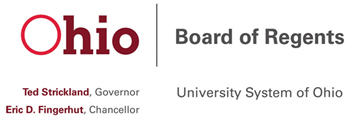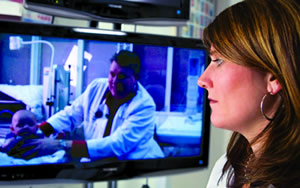The University System of Ohio is soon to be a global hub for online medical education and videoconferencing following a decision to fund the creation of a resource center in Columbus.

“The Ohio Telehealth Video Resource Center will establish Ohio as a center of excellence worldwide in videoconferencing technologies and, at the same time, contribute to the improved health and well-being of countless people throughout world,” said Ohio Governor Ted Strickland.
Telehealth is the practice of using telecommunication equipment and computing technology to support long-distance clinical health care, patient and professional health-related education, health care administration and public health interests.

While Ohio has long been on the forefront of this technology due to the State’s investment in its advanced, fiber-optic Broadband Ohio Network and the work of the Ohio Academic Resources Network [OARnet], which is the University System of Ohio’s technology operations arm, the formation of the Center greatly broadens the scope and influence of these collaborative efforts.
“Creating the Ohio Telehealth Resource Center will establish Ohio as the premier global hub for online medical education and videoconferencing,” said Ohio Board of Regents Chancellor Eric D. Fingerhut, who recently approved seed funding for the Center. “Its establishment is another example of how the University System of Ohio is leveraging resources to drive Ohio’s economic prosperity.”
The Center’s launch will strengthen and build more linkages between higher education and Ohio’s healthcare industries, a targeted economic development area of significant importance to the State. The Center will be established as an independent, nonprofit organization, and is expected to quickly become self-sustaining. It will support the use of high-quality video for health education and training, research, and associated clinical activities. Healthcare providers with little technical experience will have the ability to communicate via high-quality videoconferencing with other health providers.
Some examples of how the Center will be used include sharing “grand rounds” where doctors meet to discuss multiple patients, offering demonstrations of new and emerging clinical practices, and utilizing the Center for clinical trials, multi-center interactions and additional research projects. The Center also will provide a technology forum for the development of standards, including best practices, process and priority standards and coordination of resources.
The news was welcomed by David Gray, Latin American and Caribbean coordinator for the World Bank’s Global Development Learning Network. The World Bank is already involved in Ohio-based telehealth projects with OARnet, Johns Hopkins University and Columbia University, providing vital educational and clinical experiences to physicians from Tanzania, Pakistan, China, Egypt, Canada, Iraq, India, Brazil and Mexico.
“We expect the Ohio Telehealth Video Resource Center to play a pivotal role in connecting the medical community in the developing world with centers of excellence in the United States and beyond,” said Gray. “By combining technology and partnerships through this initiative, we can narrow the knowledge gaps that exist in healthcare, research, policy and education and can significantly improve the quality of healthcare available to people regardless of their location.”
A collaborative effort will get the Center off the ground. It will be led by Charles R. Doarn, who has served as Executive Director of the Center for Surgical Innovation at the University of Cincinnati. A world-recognized leader in the industry, with areas of specialization in space medicine, telemedicine, telehealth, and international health, Doarn has been tapped as the Executive Director of the Ohio Telehealth Video Resource Center.
In addition to the World Bank and University System of Ohio/OARnet, other partners helping to establish the Center include the Ohio Supercomputer Center and Internet2, the United States’ foremost advanced networking consortium. Internet2 brings research and academia together with technology leaders from industry, government and the international community.
The State of Ohio has seven medical colleges and an extensive network of teaching hospitals with internationally-renowned experts in many areas of medicine. The Center will give Ohio the opportunity to share its knowledge with a whole new host of people throughout the world.
Contact:
Charles R. Doarn, MBA, Executive Director, Ohio Telehealth Video Resource Center, 513-558-6148, charles.doarn@uc.edu
Media Inquiries:
Michael Chaney, Chief Communications Officer, Ohio Board of Regents, Office: 614-752-9480, Cell: 614-633-5909, Email: mchaney@regents.state.oh.us
Kathryn Kelley, Director of Outreach, Ohio Supercomputer Center, 614-292-6067, kkelley@osc.edu
Jamie Abel, Media Relations Manager, Ohio Supercomputer Center, 614-292-6495, jabel@osc.edu